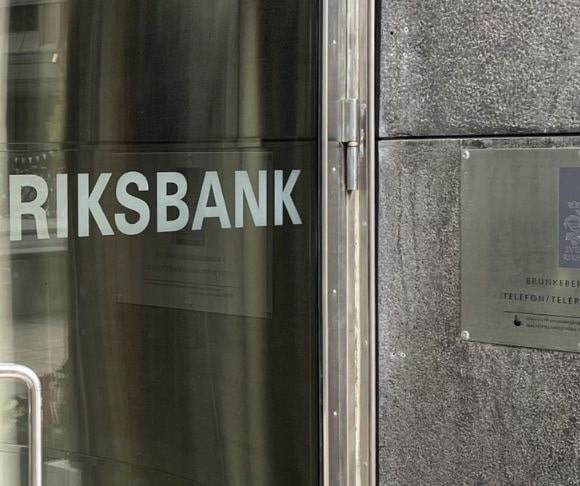In 2015, Sweden’s central bank – the Riksbank – announced that it would introduce subzero interest rates to stimulate the economy and boost inflation. Other jurisdictions followed suit, including Switzerland, Denmark, and the eurozone. After five years of running a negative interest rate policy (NIRP), Stockholm confirmed that it is ditching the experiment amid other central banks flirting with the concept. Did Sweden achieve its objective or did the land of meatballs and supermodels witness dire consequences? It could be a little bit of both.
Swedish Interest Rates
At a recent monetary policy meeting, the Riksbank agreed to raise its benchmark borrowing costs by 25 basis points, from –0.25% to 0%. While other central banks have imposed NIRP due to the global economic slump, the Riksbank became the first institution to move away from negative rates. But why now?
 Riksbank Governor Stefan Ingves told reporters that NIRP had worked as intended, spurring economic growth and lifting inflation. He added that the results in the economy may be different “if you had negative rates for a very long period.” Indeed, five years may have proven to be long enough.
Riksbank Governor Stefan Ingves told reporters that NIRP had worked as intended, spurring economic growth and lifting inflation. He added that the results in the economy may be different “if you had negative rates for a very long period.” Indeed, five years may have proven to be long enough.
A couple of Swedish central bankers – Deputy Governors Per Jansson and Anna Breman – disapproved of the decision, encouraging the Riksbank to wait a little longer before tightening. But can this really be classified as tightening, at least in the traditional sense? Interest rates are still at historic lows, so that 25 basis points may hardly be enough to alter the economy or push consumers in any meaningful way; they averaged around 3% between 1994 and 2014.
That said, do not expect Sweden to abandon negative rates for too long, especially if growth remains subdued. Ingves has already hinted that the economy could have periods of subzero rates in the future. “Zero isn’t a floor for interest rates. It is the rate that is the most appropriate at the moment. If we need to, we can have periods … with negative rates, but that’s a hypothetical question and not anything we see ahead of us given our view of the development of the economy,” he said.
What have been the results of the five-year trial?
A Financial Crisis in the Making
It is true that the gross domestic product shot up after the negative rates were instituted. However, growth has not matched the economic expansion that took place before the non-traditional monetary policy directive. Inflation has also hovered around 2%, but it is short of what happened in the years prior to the Riksbank introducing negative rates. The National Institute of Economic Research (NIER) prognosticates that the central bank will not meet its inflation target for another four years.
In addition to that, the Swedish economy could experience a financial crisis in the event of an unforeseen shock. The reason? Households and corporations have taken on enormous levels of debt with borrowing costs at record lows. Household debt is at an all-time high of 280% of the GDP, while the corporate debt to GDP ratio is slightly shy of 160%. If rates edge up, servicing payments will be higher.
Pension funds and insurance firms have taken on greater risks just to meet their liabilities.
A zombie business is one that requires a bailout to operate or a firm that is in so much debt that it can only repay the interest and not the principal. This is prevalent across the country. Easy money, fueled by low rates, has kept zombie companies on life support. Without cheap loans, these lifeless corpses would have already shut their doors and raised the white flag of surrender.
While somewhat unrelated to subzero rates, Sweden is facing a housing crisis, according to an S&P Global Market Intelligence report. Over the last 25 years, real home prices have skyrocketed 200% as the government prevents new development and stock from entering the real estate market. Price controls, a capital gains tax on property, and the uptick in demand thanks to higher immigration in 2016 have accentuated the housing crisis.
Put simply, something is rotten in Stockholm.
The World Braces for Subzero Rates

(Photo by Fu Yiming/Xinhua via Getty Images)
Today, a handful of jurisdictions maintain negative rates, including Denmark, Hungary, Japan, and Switzerland. The purpose of the measure is to facilitate growth, but it does not appear to be doing what it is supposed to do. Japan is on the verge of a recession, Switzerland is getting slammed by trade uncertainty and a stronger franc, the eurozone is a lost cause, and Denmark is slowing down.
Since negative rates have become the new norm for slumping markets, could the U.S. adopt NIRP in the event of a recession? Former Federal Reserve Chair Ben Bernanke believes the U.S. should be open to it, writing in a blog post for the Brookings Institution that it is best to keep this option available since other central banks have effectively used these new monetary policy tools. Bernanke added that the risks “have proved modest,” and the only possible exception has been threats to financial stability. He suggested:
“Categorically ruling out negative rates is probably unwise, as future situations in which the extra policy space provided by negative rates could be useful are certainly possible. Central bank purchases of longer-term financial assets … have proved an effective tool for easing financial conditions and providing economic stimulus when short rates are at their lower bound. The effectiveness of QE does not depend on its being deployed during a period of market turbulence.”
The Eccles Building has been debating this policy since 2015 when then-Fed Chair Janet Yellen noted that going into subzero territory was on the table in the event of an economic downturn. Former central bank chief Alan Greenspan believes it is “only a matter of time” before negative rates are adopted. However, current Fed Chair Jerome Powell does not think the Fed will travel that route.
The idea that this unconventional monetary policy tool has been effective is disingenuous. All the data point to disappointment in markets that have implemented NIRP, a strategy that is serving as training wheels for economies teetering on disaster. The European Central Bank (ECB), for example, is praying for some good news after deepening negative rates and relaunching quantitative easing late last year. Growth has been minimal, employment has been lackluster, and debt has been perverse – to say these are effective results suggest low standards or mendacity.
Central Planners Going to Central Plan
In the end, what studies find is that negative rates paint a sour picture of the economy, leaving consumers with the feeling that the nation is on the brink of a recession. So, the measure does the opposite of what it is intended to do. It makes sense. If your country slashes rates to negative territory, would you start spending like a drunken sailor or take your capital and stuff it in the microwave, similar to what the Swedes have been doing?
~
Read more from Andrew Moran.




